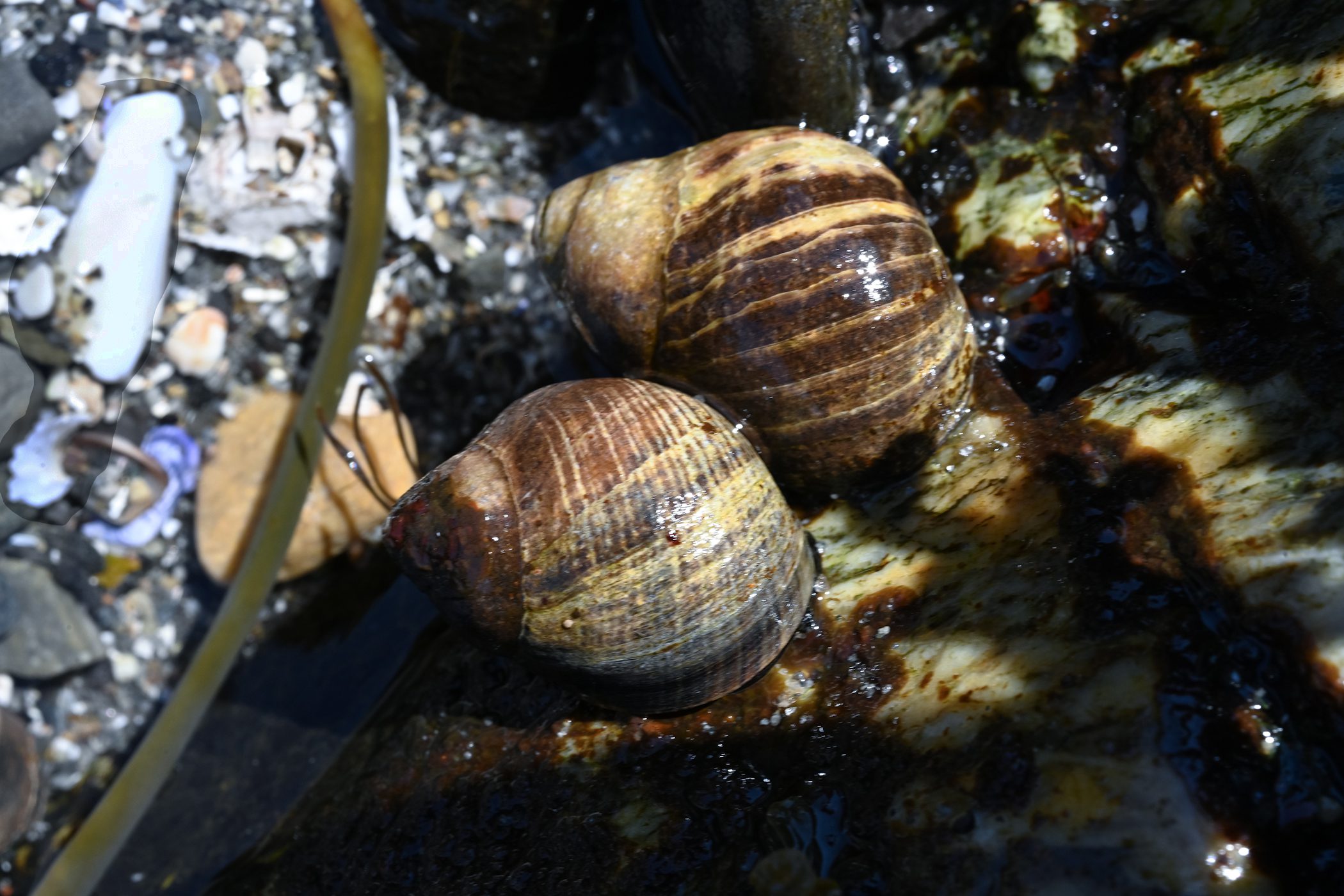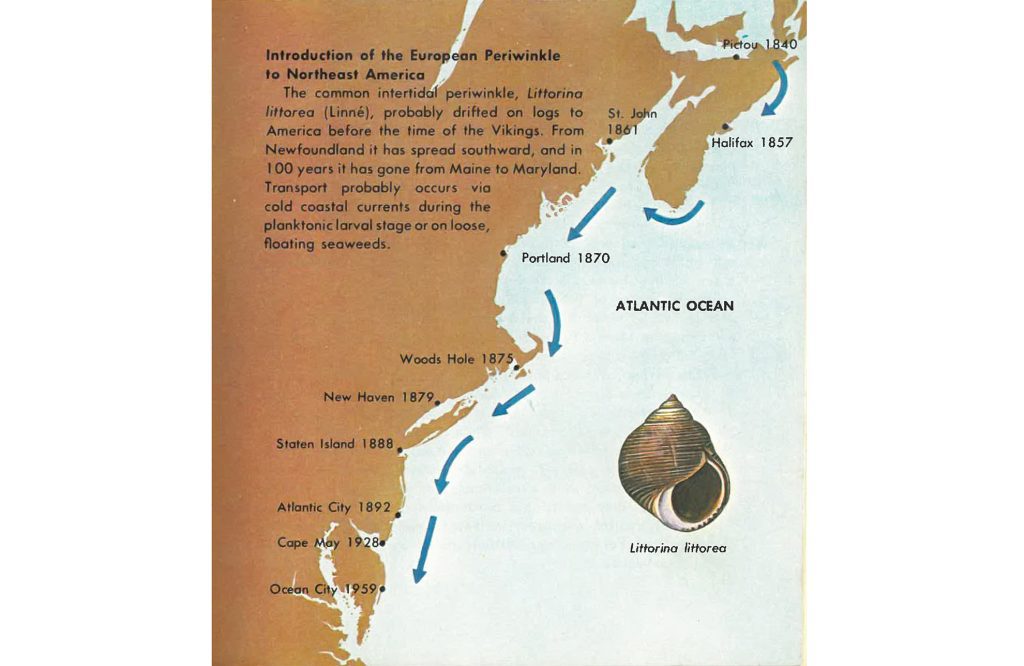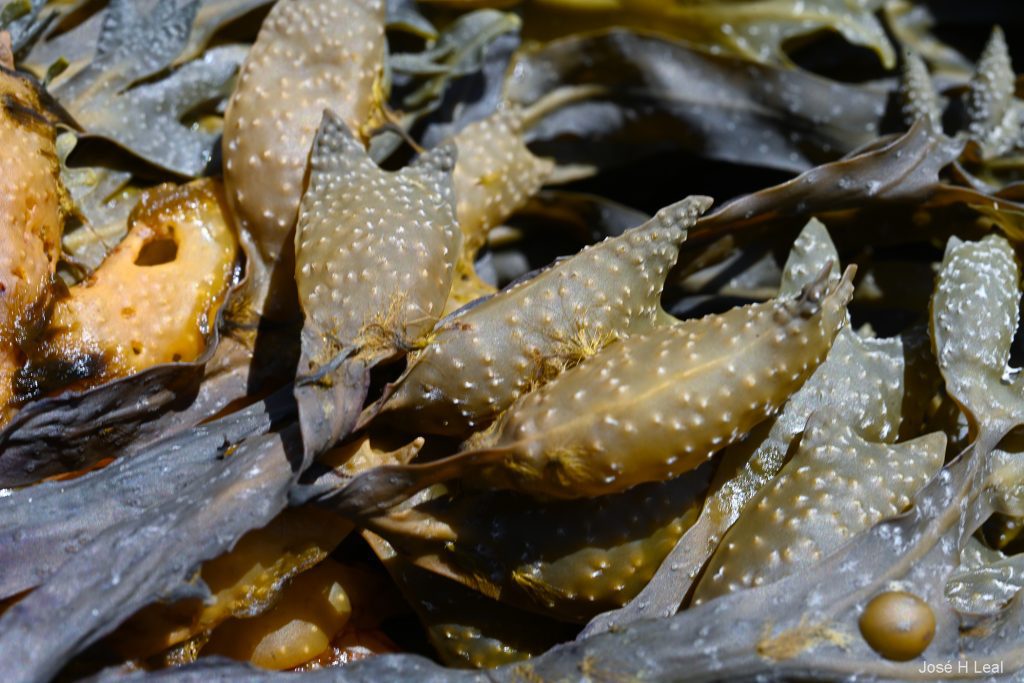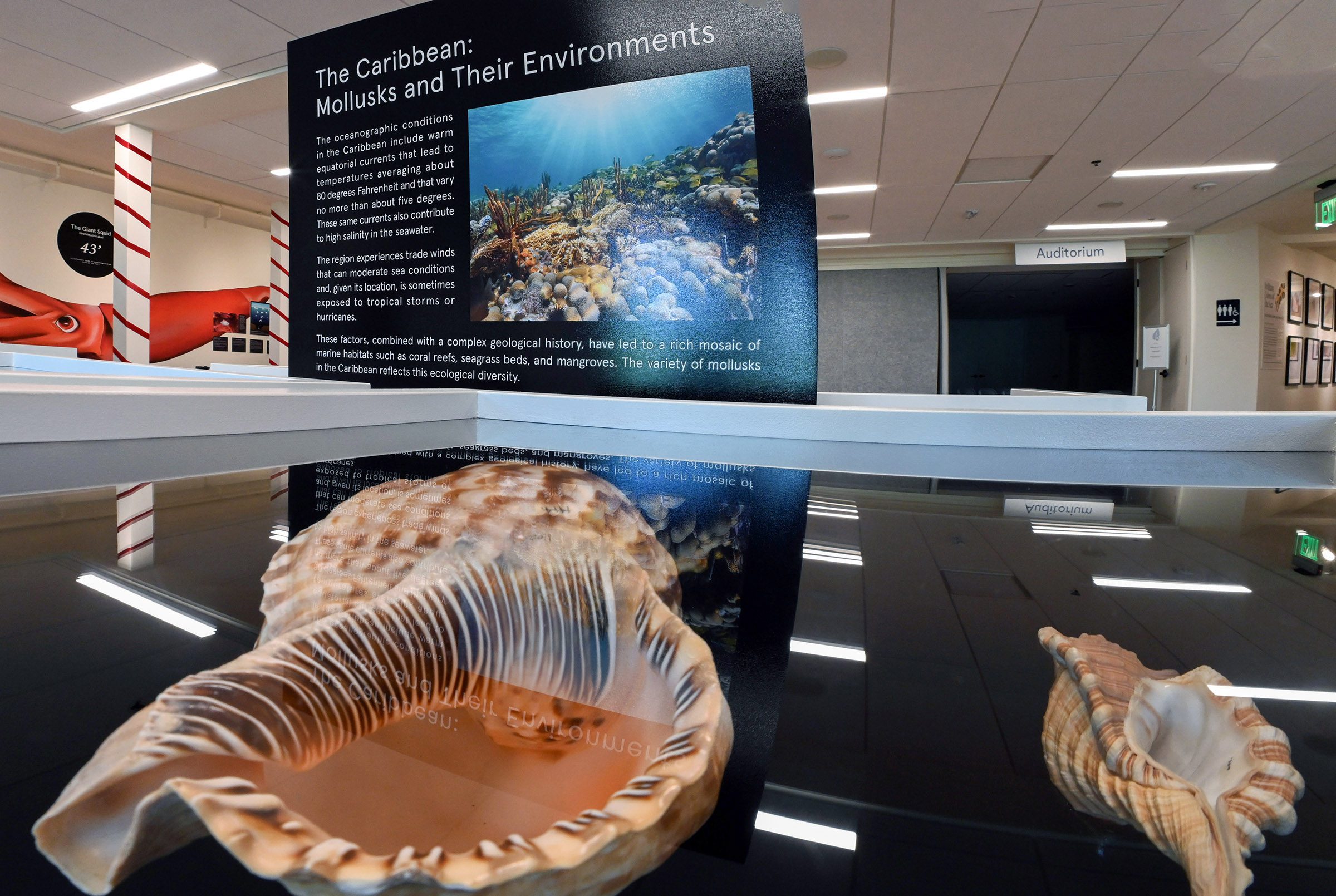During a recent visit to the coast of southern Maine, I observed and photographed Common Periwinkles. Littorina littorea is one of the most common shallow-water species found along the northern half of the Eastern Seaboard of the US.

Observing the species in its natural environment prompted me to learn more about it. I recalled a particular page of R. Tucker Abbott’s now classic Seashells of North America (Abbott, 1968, page 33), in which the author depicted a possible path for the dispersal of this invasive species in North America following its arrival from northern Europe.

Common Periwinkles were apparently first introduced to the Atlantic coast (Gulf of St Lawrence, Canada) from Europe in the mid-1800s, but there are records of shells found in old Native American and Norse archaeological sites in Nova Scotia and Newfoundland dating back to 1000–1300 BP. Currently, the Common Periwinkle is found in North America from Labrador to Virginia and was also introduced to the west coast. It is mostly an intertidal (living between the tide lines) species that lays disk-shaped, floating egg capsules, and is primarily an algal grazer, feeding on micro- and macroalgae. The Common Periwinkle is also a common seafood item in western Europe.

Read more about the Common Periwinkle in the Smithsonian Marine Invasions website and MarLIN (The Marine Life Information Network).


